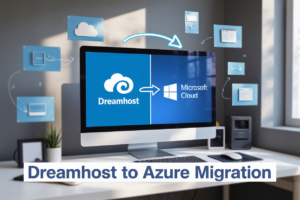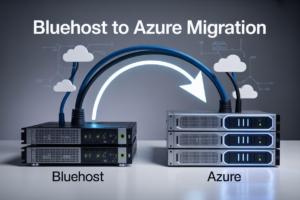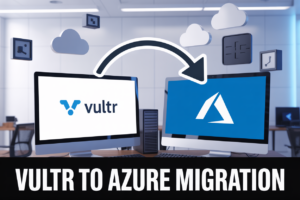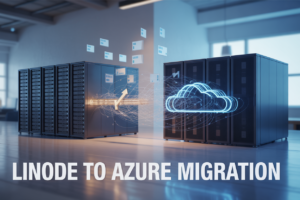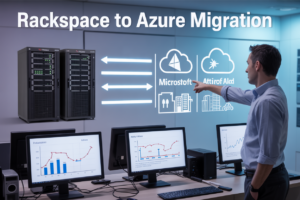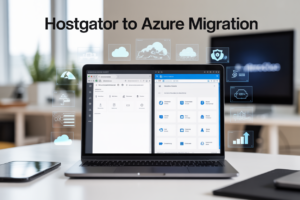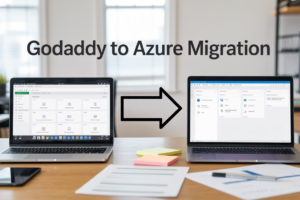Ever stared at your AWS console wondering if you’re making a colossal storage mistake that’ll cost thousands later? You’re not alone. Half the developers I talk to aren’t sure whether their data belongs in Amazon RDS or S3.
Here’s the deal: choosing the wrong AWS storage solution isn’t just a technical hiccup—it’s potentially thousands in unnecessary costs and performance headaches down the road.
The difference between Amazon RDS for databases and S3 for object storage seems obvious until you’re building something complex. Then the lines blur fast.
I’ve spent years optimizing AWS architectures for companies from startups to enterprises, and I’ve seen the same costly mistakes repeatedly. But I’ve also discovered a surprisingly simple framework for making these decisions.
What if the perfect storage choice came down to just answering three questions about your data?
Understanding AWS Storage Services Fundamentals
A. Key differences between database and object storage
Picking the right storage in AWS feels like choosing between a filing cabinet and a warehouse. They’re built for different jobs.
Database storage (like RDS) is your go-to when relationships matter. Think customer orders linked to inventory, with transactions that need to happen perfectly or not at all. RDS gives you that structured environment where your data follows rules and stays consistent.
Object storage (S3) doesn’t care about relationships. It’s more like “here’s my stuff, hold onto it.” Perfect for those massive video files, images, backups, or logs that don’t need to be queried in complex ways.
| RDS (Database Storage) | S3 (Object Storage) |
|------------------------|---------------------|
| Structured data | Unstructured data |
| Complex queries | Simple retrieval |
| Transactions | Immutable objects |
| Fixed schema | Flexible format |
| GB to TB scale | TB to PB scale |
B. AWS storage ecosystem overview
AWS didn’t stop at just databases and buckets. They’ve built a whole family of storage options that work together.
Beyond RDS and S3, you’ve got DynamoDB for when you need NoSQL speed, ElastiCache when milliseconds matter, and EFS when your applications need shared file systems.
The magic happens when you connect them. Store your media in S3, reference it in your RDS database, and cache hot content in CloudFront. Your database backups? Automatically ship them to S3 for safekeeping.
AWS keeps adding integration points too – like RDS’s ability to import/export directly from S3 buckets or Lambda functions that trigger when new objects land in your buckets.
C. Selecting the right storage solution for your workload
Honestly, storage selection comes down to asking the right questions:
- Need instant updates and complex relationships? RDS is your answer.
- Storing large files that rarely change? S3 all the way.
- Working with unpredictable, schemaless data? Look at DynamoDB.
Real-world apps typically mix and match. Your e-commerce platform might use RDS for orders and inventory, S3 for product images, and DynamoDB for shopping carts.
Performance requirements matter too. If you’re doing financial transactions, RDS with provisioned IOPS might be non-negotiable. If you’re building an image-heavy portfolio site, S3 with CloudFront will give you the speed users expect.
Cost and compliance factor in as well. Some data needs the durability of S3’s 11 9’s, while other data might be fine with lower redundancy storage classes.
D. Cost optimization strategies across storage options
Cloud storage bills can creep up on you if you’re not careful. Smart tactics can cut costs dramatically:
For S3:
- Use lifecycle policies to automatically move aging data to cheaper storage tiers
- Enable intelligent tiering to let AWS optimize for you
- Set up S3 Analytics to identify patterns in your storage usage
For RDS:
- Right-size your instances – many databases are overprovisioned
- Use read replicas strategically rather than scaling up primary instances
- Schedule dev/test databases to shut down outside business hours
Cross-service strategies work too:
- Compress data before storing it
- Use S3’s bulk pricing tiers by consolidating storage across projects
- Consider Reserved Instances for predictable RDS workloads
The lowest hanging fruit? Cleanup. You’d be shocked how much orphaned storage sits in AWS accounts costing real money each month.
Amazon RDS Deep Dive
RDS Database Engine Options and Use Cases
Amazon RDS isn’t a one-size-fits-all solution—it’s a buffet of database engines. Each one shines in different scenarios:
MySQL: The workhorse for web applications and e-commerce platforms. Perfect when you need solid performance without breaking the bank.
PostgreSQL: The swiss army knife of databases. Got complex queries and need advanced data types? PostgreSQL’s your pick.
MariaDB: MySQL’s cooler cousin with enhanced performance. Great for applications transitioning from MySQL.
Oracle: Enterprise-grade reliability for legacy systems and organizations with existing Oracle licenses.
SQL Server: The go-to for .NET applications and Windows-centric development teams.
Aurora: AWS’s supercharged version of MySQL/PostgreSQL with 5x performance. Worth every penny for high-throughput applications.
Choose wisely—switching engines later is like changing engines mid-flight.
Multi-AZ Deployments for High Availability
Database downtime = business nightmare. That’s where Multi-AZ deployments save the day.
How it works: AWS maintains a standby copy of your database in another Availability Zone. When trouble hits your primary database, RDS automatically fails over to the standby—usually within 60-120 seconds.
The beauty? It’s completely automatic. No manual intervention needed.
Benefits:
- Protection against AZ failures
- Zero downtime during maintenance windows
- Enhanced durability through synchronous replication
The cost? About double your single-AZ deployment. But ask yourself: what’s the cost of your database being offline for hours?
Performance Optimization Techniques
Want to squeeze every ounce of performance from your RDS instance? Try these proven tactics:
Instance sizing matters: Right-size your instance. Too small? Throttling issues. Too big? Wasted money.
Storage optimization:
- Use Provisioned IOPS for I/O-intensive workloads
- General Purpose SSD works for most applications
- Magnetic storage only for rarely accessed data
Read replicas: Offload read traffic from your primary instance. Scale out, not just up.
Parameter groups: Fine-tune your database engine settings. A few tweaks to buffer sizes can work wonders.
Monitoring is king: You can’t improve what you don’t measure. CloudWatch metrics help identify bottlenecks before they become problems.
Automated Backups and Point-in-Time Recovery
Database disasters happen to everyone. RDS’s backup capabilities ensure they’re just minor inconveniences, not catastrophes.
Automated backups: RDS automatically backs up your database daily during your specified backup window. These backups are retained for 1-35 days.
Transaction logs: Captured every 5 minutes, enabling point-in-time recovery.
When disaster strikes, restore your database to any second within your retention period. It’s like a time machine for your data.
For critical systems, consider:
- Increasing your retention period
- Taking manual snapshots for long-term retention
- Testing recovery procedures regularly
Scaling Strategies for Growing Workloads
Your application is gaining traction—awesome! But now your database is sweating. Here’s how to scale RDS effectively:
Vertical scaling (scaling up):
- Change instance class with a few clicks
- Minimal downtime during the change
- Simple but has upper limits
Horizontal scaling (scaling out):
- Read replicas distribute read traffic
- Up to 15 read replicas per primary
- Great for read-heavy workloads
Storage scaling:
- Enable storage autoscaling
- Set maximum storage threshold
- RDS automatically adds storage when you’re running low
For truly massive workloads, consider database sharding or migrating to Aurora, which offers better scaling capabilities than standard RDS.
Remember: plan your scaling strategy before you need it. The best time to prepare for success is before you achieve it.
Maximizing Amazon S3 for Object Storage
A. S3 Storage Classes and Intelligent Tiering
Ever wondered why your AWS bill makes you want to cry? It might be because you’re using Standard storage for those vacation photos from 2015. Amazon S3 offers various storage classes designed for different access patterns:
- S3 Standard: For frequently accessed data
- S3 Intelligent-Tiering: Automatically moves objects between access tiers
- S3 Standard-IA: For data accessed less frequently
- S3 One Zone-IA: Like Standard-IA but stored in a single AZ
- S3 Glacier and Glacier Deep Archive: For long-term archiving
The real magic happens with Intelligent-Tiering. This beauty monitors your access patterns and automatically moves objects between tiers. You pay a small monitoring fee, but save big when your data usage patterns change.
B. Data Lifecycle Management for Cost Efficiency
Your data is like that closet at home—stuff you need daily sits at the front, while Christmas decorations get pushed to the back.
Create S3 Lifecycle rules to automatically transition objects:
Standard (30 days) → Standard-IA (90 days) → Glacier (1 year) → Deep Archive
This approach can slash your storage costs by up to 70%. Set expiration rules for objects you don’t need forever, like logs or temporary files.
C. Performance Optimization for High-Throughput Applications
S3 can handle insane workloads, but you need to play by its rules:
- Use random prefixes for high-request-rate workloads
- Implement parallel uploads for large files using multipart uploads
- Consider S3 Transfer Acceleration for cross-region transfers
- Use CloudFront as a CDN for frequently accessed content
For applications needing consistent high throughput, S3 request rate performance now scales automatically—no more need to contact AWS for rate limit increases.
D. Security Best Practices and Encryption Options
Security isn’t optional with cloud storage. Period.
Implement these S3 security measures:
- Block public access settings at the account level
- Use IAM policies and bucket policies together for defense-in-depth
- Enable versioning to protect against accidental deletions
- Set up access logging to track who’s doing what
For encryption, S3 offers:
- SSE-S3: AWS-managed keys
- SSE-KMS: AWS KMS managed keys with audit trail
- SSE-C: Customer-provided keys
- Client-side encryption: You handle everything
Always encrypt sensitive data both in transit and at rest. No exceptions.
Integration Strategies Between RDS and S3
A. Importing and exporting data between services
Ever tried moving a mountain of data between RDS and S3? It’s actually not that scary. AWS gives you several paths to make this happen smoothly.
For RDS to S3 exports, PostgreSQL users can leverage the aws_s3 extension:
SELECT aws_s3.table_export_to_s3('customers', '', 'my-bucket/exports/customers.csv');
MySQL fans can use the SELECT INTO OUTFILE S3 statement:
SELECT * FROM customers INTO OUTFILE S3 's3://my-bucket/exports/customers.csv';
Going the other way? S3 to RDS imports are just as straightforward:
LOAD DATA FROM S3 's3://my-bucket/imports/new_customers.csv'
INTO TABLE customers;
B. Building hybrid storage architectures
Smart AWS architects don’t pick sides in the RDS vs S3 debate – they use both together. The winning combo? Store structured data in RDS while keeping unstructured files (images, PDFs, backups) in S3.
This approach gives you the best of both worlds:
| RDS | S3 |
|---|---|
| Transactional integrity | Unlimited storage |
| Query capabilities | Lower cost per GB |
| ACID compliance | 99.999999999% durability |
A typical pattern: Store product information in RDS while keeping product images, videos and user uploads in S3, linking them via URLs or object keys in your database records.
C. ETL workflows using both services
ETL workflows shine when combining RDS and S3. The typical flow looks like:
- Extract data from RDS to S3 (raw data layer)
- Transform the data using AWS Glue, Lambda or EMR
- Load processed data back to RDS or keep in S3 for analytics
AWS Glue makes this particularly smooth with built-in connectors for both services. You can define crawlers to discover schema from your RDS databases and S3 buckets, then build transformation jobs without heavy lifting.
D. Real-time data processing patterns
Need to handle streaming data while keeping RDS and S3 in sync? Here’s how the pros do it:
- Use DynamoDB streams or RDS binlog to capture database changes
- Trigger Lambda functions for each change event
- Process and store the results in S3
For high-throughput scenarios, Kinesis Data Firehose can buffer incoming data before batch-loading to S3, while Amazon MSK (Kafka) can coordinate complex event processing across your architecture.
The real magic happens when you combine Amazon EventBridge with Step Functions to orchestrate complex workflows between your RDS databases and S3 buckets based on time or event triggers.
Advanced Management and Monitoring
CloudWatch Metrics for Performance Insights
AWS CloudWatch is your best friend when it comes to monitoring RDS and S3. But don’t just collect data – use it to make smart decisions.
For RDS, you’ll want to keep an eye on these key metrics:
- CPU utilization (watch for sustained periods over 80%)
- Available memory (less than 100MB means trouble)
- I/O operations (high wait times signal potential bottlenecks)
- Connection count (sudden spikes can crash your database)
db.load.avg > 2 for 15 minutes = Time to investigate
For S3, focus on:
- Request rates (especially GET and PUT)
- Error rates (4xx and 5xx responses)
- First byte latency (should be milliseconds, not seconds)
Automated Maintenance and Patching
Nobody likes midnight maintenance calls. AWS gets it.
RDS maintenance windows let you schedule updates when impact is minimal. Pro tip: test these patches in dev environments first!
S3 requires zero maintenance on your part – AWS handles everything behind the scenes. That’s the beauty of object storage.
This automation doesn’t mean you can ignore what’s happening. Always review the AWS Health Dashboard for upcoming changes that might affect your workloads.
Compliance and Regulatory Considerations
Cloud storage and compliance used to be like oil and water. Not anymore.
Running efficient AWS storage solutions requires a strategic approach to both relational databases and object storage. As we’ve explored, Amazon RDS offers managed database solutions with automatic backups, patching, and scaling capabilities across multiple database engines, while Amazon S3 provides durable, highly available object storage that’s cost-effective and integrates seamlessly with other AWS services.
When building your AWS infrastructure, consider how RDS and S3 can complement each other – using RDS for structured data that requires transactions and complex queries, while leveraging S3 for media files, backups, and large datasets. Implement proper monitoring through CloudWatch, maintain regular backup strategies, and follow security best practices for both services. By mastering these AWS storage foundations, you’ll be well-positioned to build scalable, reliable applications that can grow with your business needs.











